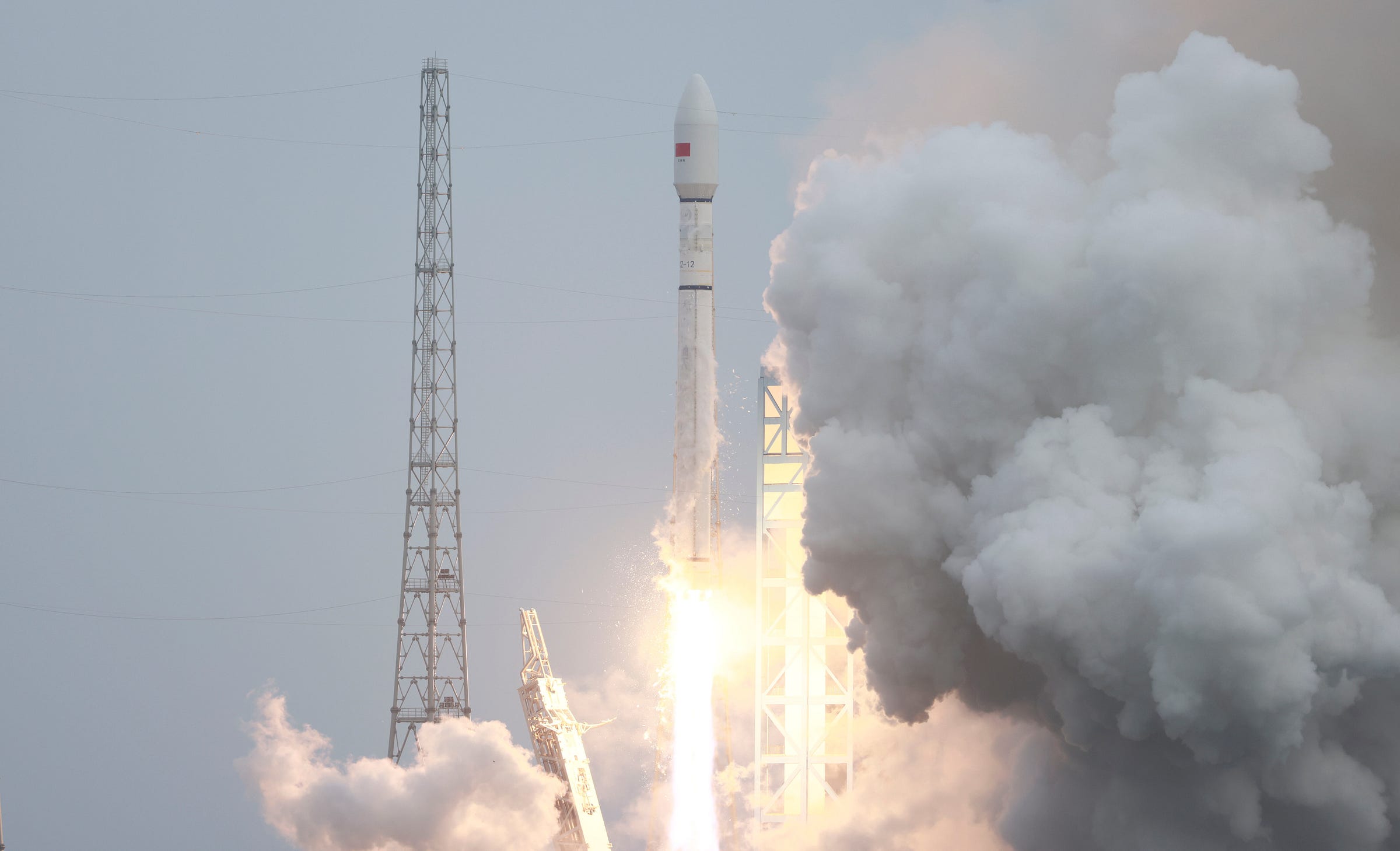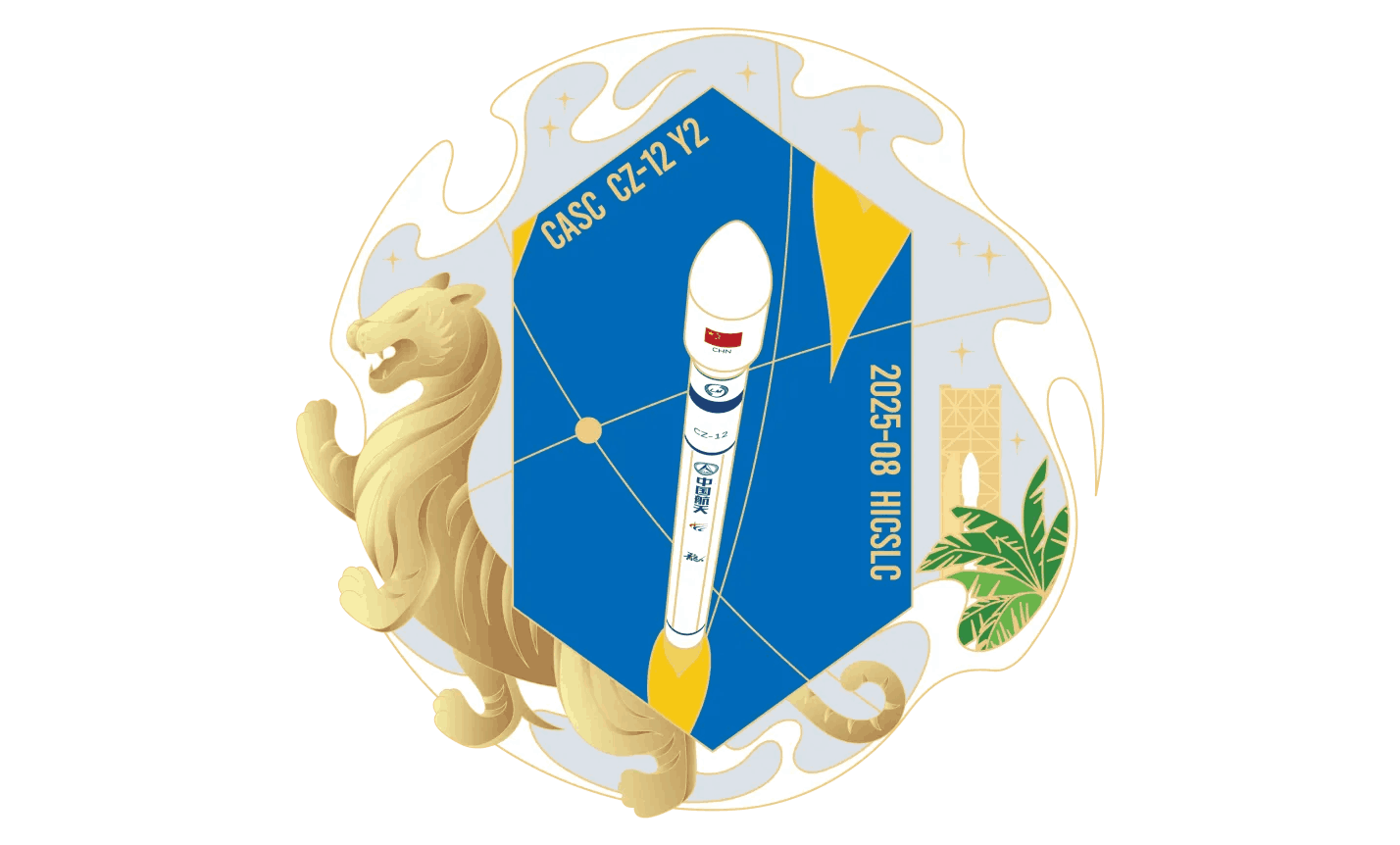New Satellite Internet Group in Orbit [Long March 12 Y2]
Even more GuoWang spacecraft have been launched from Wenchang.
A Long March 12 blasted off from Commercial Launch Pad 2 at the Wenchang Commercial Space Launch Site at 18:21 pm China Standard Time (10:21 Universal Coordinated Time) on August 4th, flying to low Earth orbit with a group of satellites for an internet constellation.
Riding atop of the Long March 12 were the seventh batch of GuoWang (国网) mega-constellation satellites, with nine satellites onboard based on the launch mission patch and payload capacity. GalaxySpace (银河航天) developed the satellites for the seventh patch, becoming the first privately-owned spacecraft developer to do so.
The GuoWang constellation is operated by China Satellite Network Group, a state-owned enterprise, and wholly backed by the Chinese government, who plan to have around 400 satellites deployed by 2027. By the 2030s, up to 13,000 satellites could be in orbit providing worldwide internet services, however China-focused services will be the immediate priority.
GuoWang is still slowly catching up to the Qianfan (千帆) mega-constellation, also set to provide space-based internet services, with its 90 satellites in orbit, compared to GuoWang’s 57. The catch-up is being enabled by the lack of deployment of Qianfan satellites, which is believed to be on hold to troubleshoot some satellite issues.
Two different satellite variants are believed to be in use for the constellation, a larger version used on vehicles like the Long March 5B, while smaller ones are used when launched atop rockets such as the Long March 8A or Long March 6A. An electric propulsion system is likely in use due to a planned operational orbit above 1000 kilometers in altitude, as it would be the most efficient means of propulsion to deorbit each spacecraft once they reach the end of their operational lives after several years.
According to the Shanghai Academy of Spaceflight Technology in its post-launch blog post, today’s mission introduced a multi-satellite adapter to carry the GuoWang batch, with optimal and safe placement tested via digital simulations. Weight reduction efforts were made across various parts of the vehicle, including the liquid oxygen and kerosene tanks as well as the payload adapters, through composite materials while maintaining structural integrity (hopefully to prevent fragmentation again).
Additionally, environmental control systems received upgrades during the Long March 12’s launch campaign, which included a new air conditioning connector and additional temperature and humidity monitoring points within the payload fairing. Tropical Storm Wipha passed just north of Hainan province (海南) too, with flood and typhoon prevention measures implemented to ensure the safety of launch teams and the rocket in the event of a close pass.
This mission was the 2nd launch of a Long March 12 vehicle, the 587th launch of the Long March launch vehicle series, and the 241st Long March vehicle launch from the Shanghai Academy of Spaceflight Technology. This was also the 43rd launch from China in 2025.
Liftoff video via SpaceLens云上天镜, 航天五线谱, and China航天 on Weibo.
Launch preparation footage via the Shanghai Academy of Spaceflight Technology.
Check out the previous Long March 12 launch
New Rocket, New Launch Pad, New Launch Site [Long March 12 Y1]
At 22:25 pm China Standard Time, or 14:25 pm Universal Coordinated Time, on November 30th, the Long March 12 made its debut flight from Commercial Launch Pad 2 at the Wenchang Commercial Space Launch Site! This launch is the first of many f…
What is the Long March 12?
This section is for those less familiar with China's Long March series of launch vehicles.
The Long March 12 is a two-stage launch vehicle from the Shanghai Academy of Spaceflight Technology. Both stages of the launch vehicle burn rocket-grade kerosene and liquid oxygen.
The payload capacity of the launch vehicle is currently as follows:
12,000 kilograms to a low Earth orbit
6,000 kilograms to a 700-kilometer sun-synchronous orbit

Four YF-100K engines power the first stage, generating a combined thrust of 510 tons while burning liquid oxygen and rocket-grade kerosene. Two YF-115 engines power the second stage, generating 36 tons of thrust while also burning liquid oxygen and rocket-grade kerosene.
On the launchpad, the rocket stands at 62.6 meters in height, while having a first and second stage diameter of 3.8 meters. Fully fuelled the Long March 12 is believed to weigh 433,000 kilograms. The fairing of the Long March 12 is also believed to have options for either a 3.8, 4.2, or 5.2-meter diameter, depending on the needs of the mission.
Currently, the Long March 12 has only flown from the Wenchang Commercial Space Launch Site, on the east coast of Hainan province.





![New Rocket, New Launch Pad, New Launch Site [Long March 12 Y1]](https://substackcdn.com/image/fetch/$s_!f_2X!,w_1300,h_650,c_fill,f_auto,q_auto:good,fl_progressive:steep,g_auto/https%3A%2F%2Fsubstack-post-media.s3.amazonaws.com%2Fpublic%2Fimages%2F810f35d7-3b3a-4df6-929c-9687c3135635_2000x1129.jpeg)